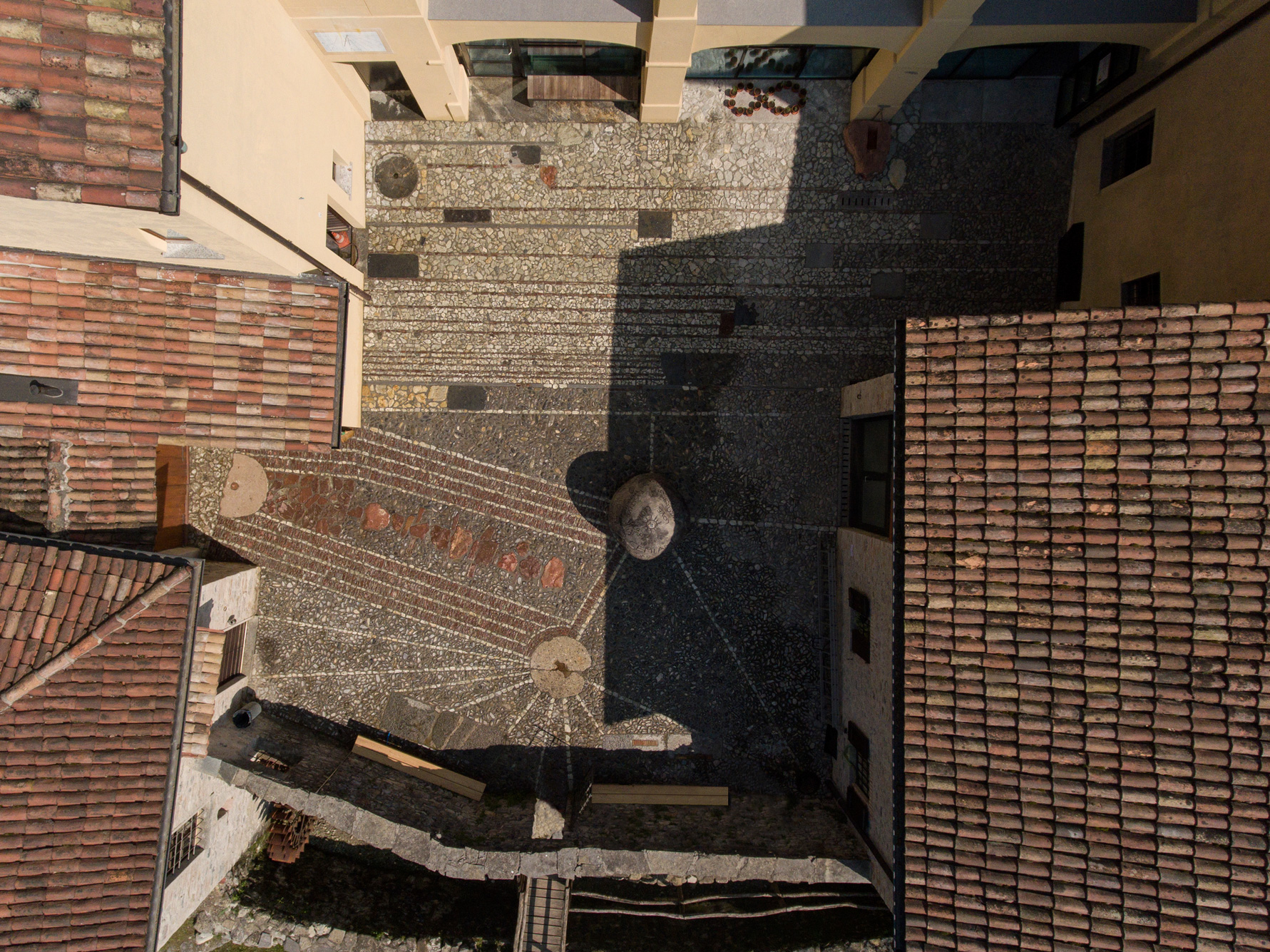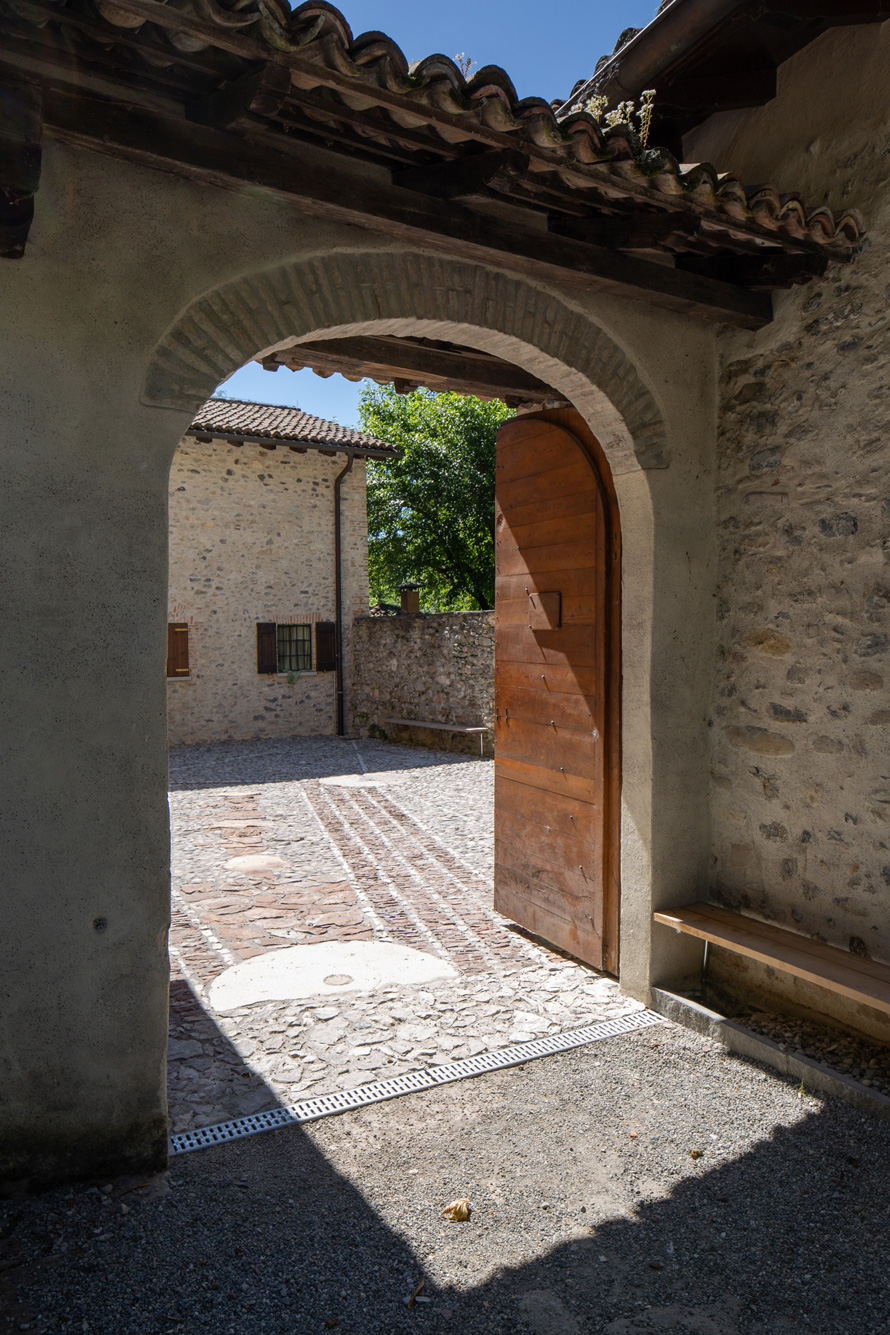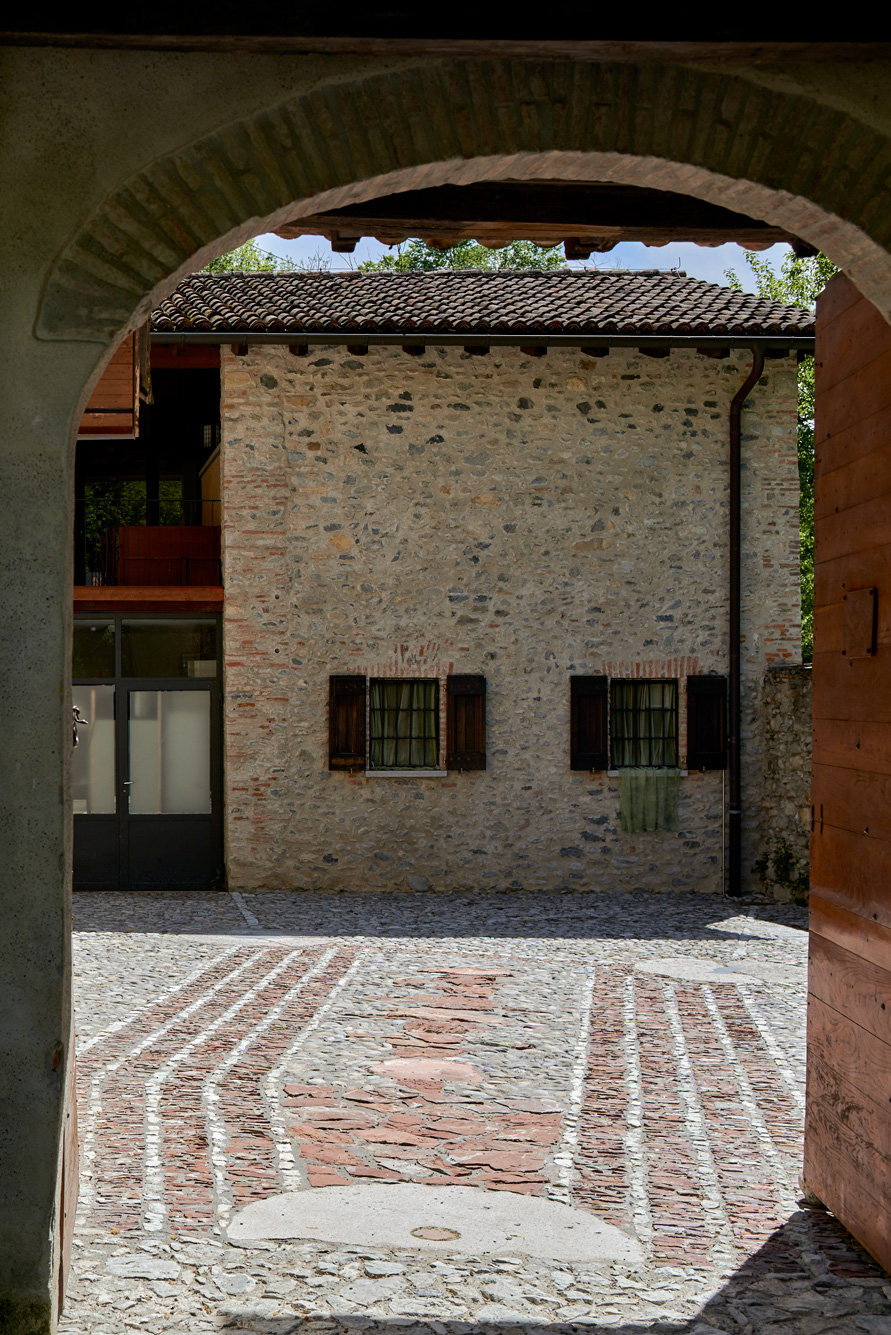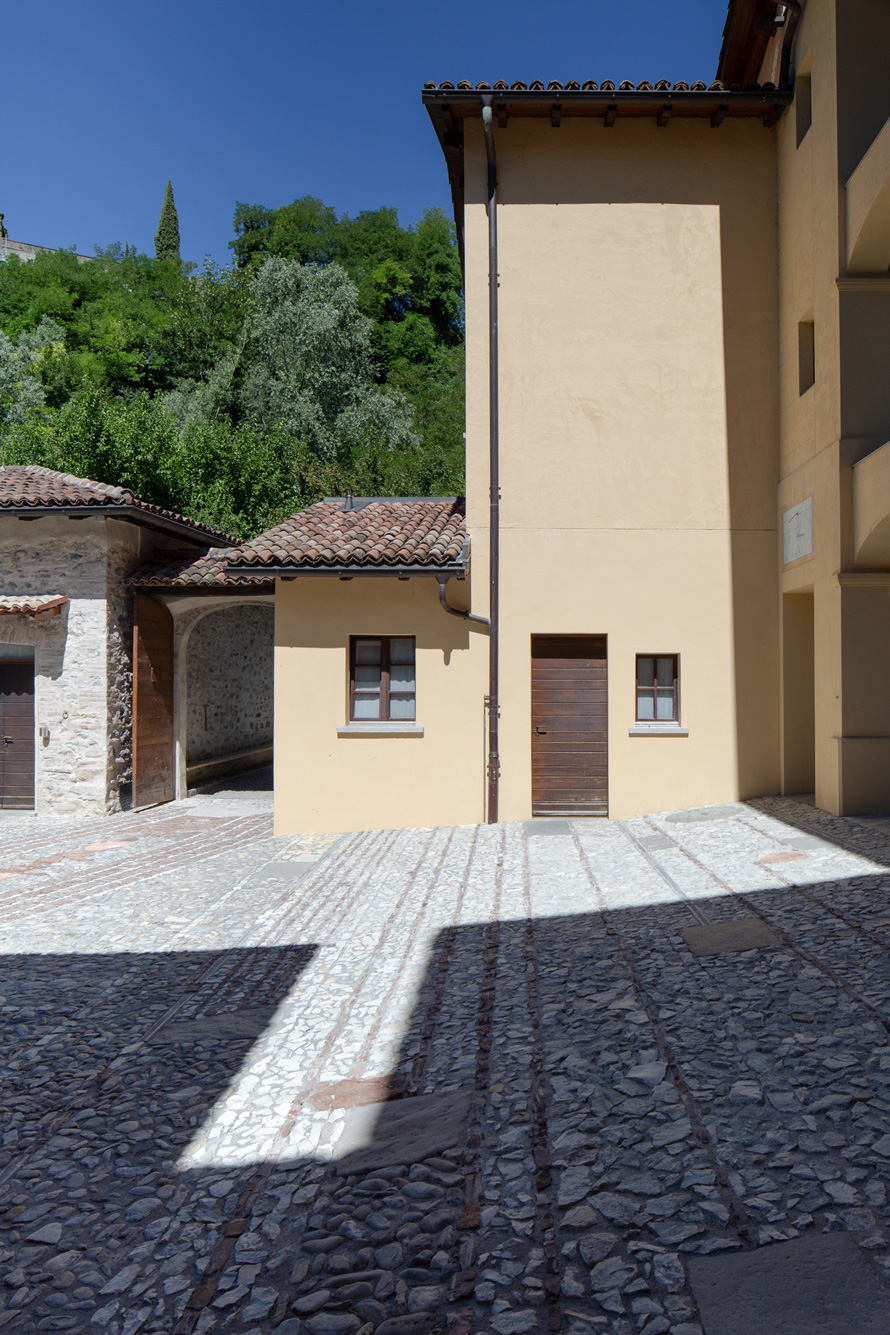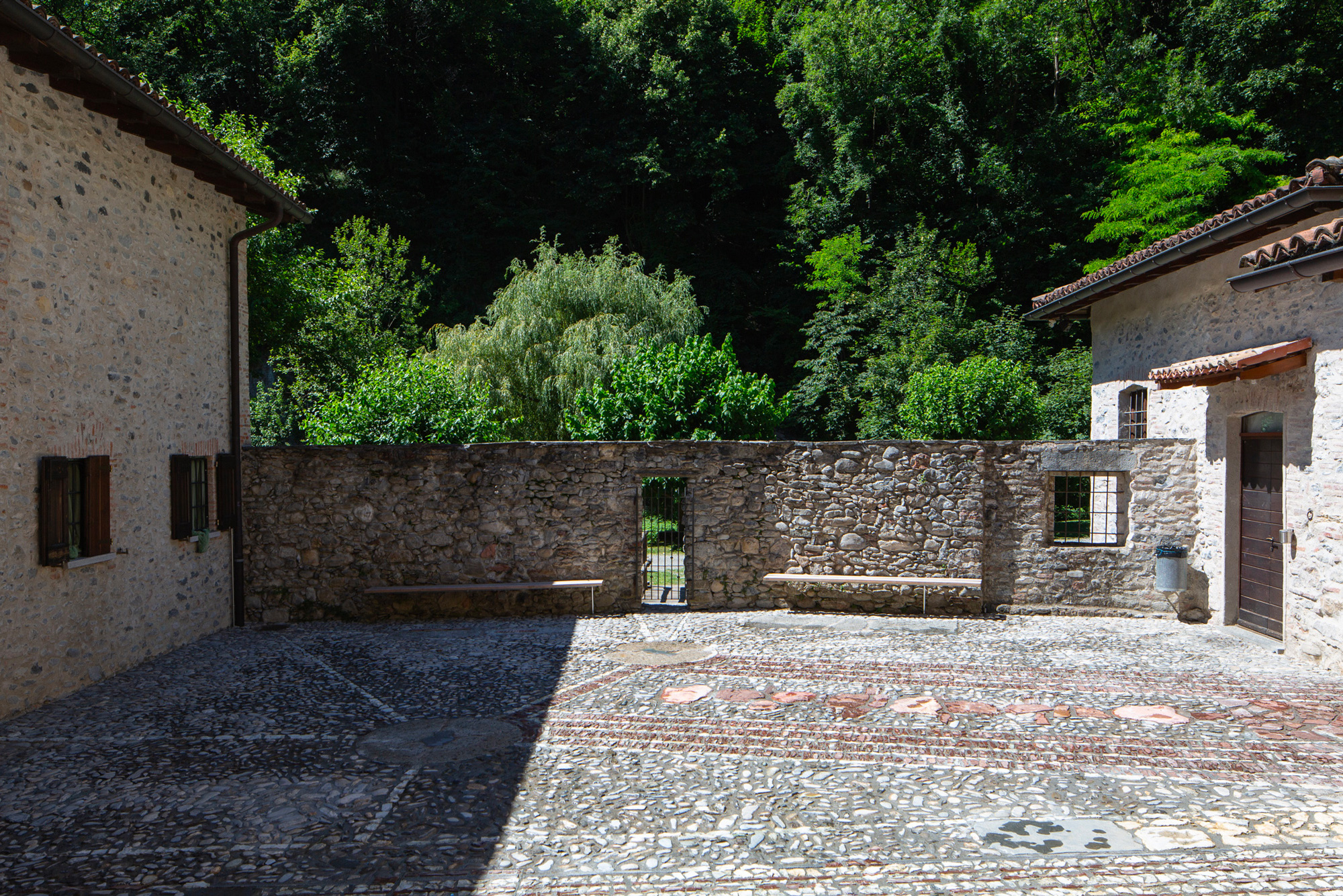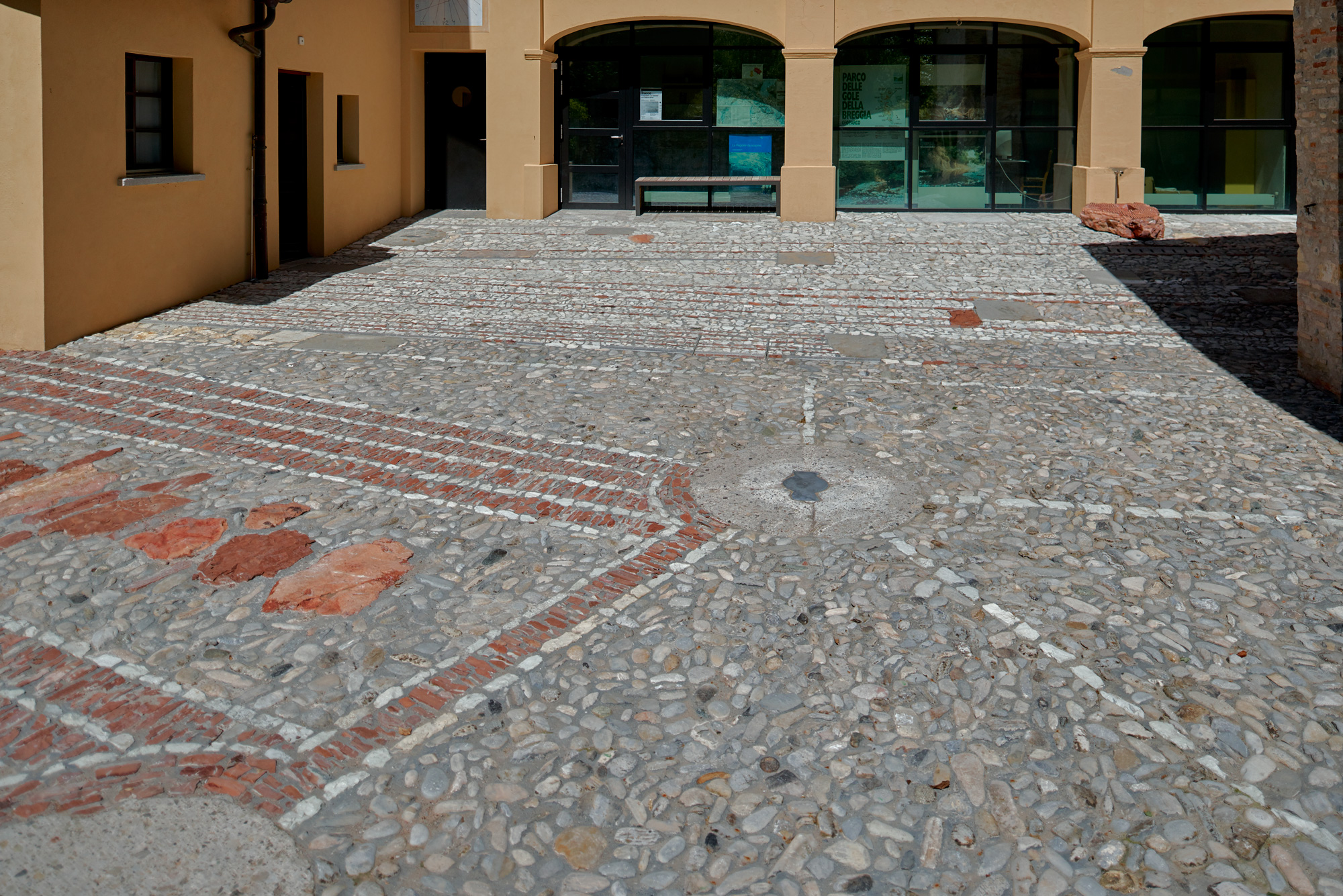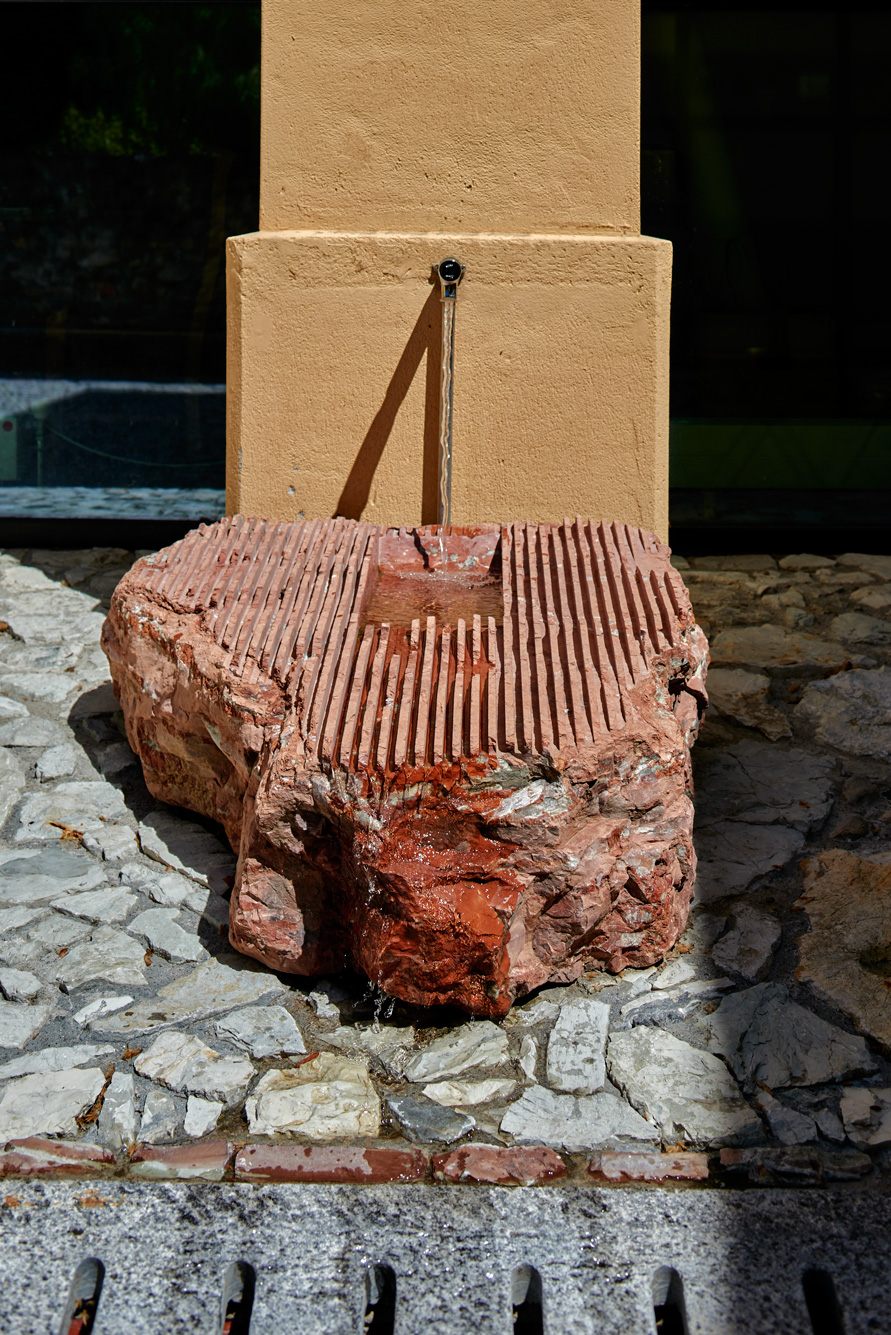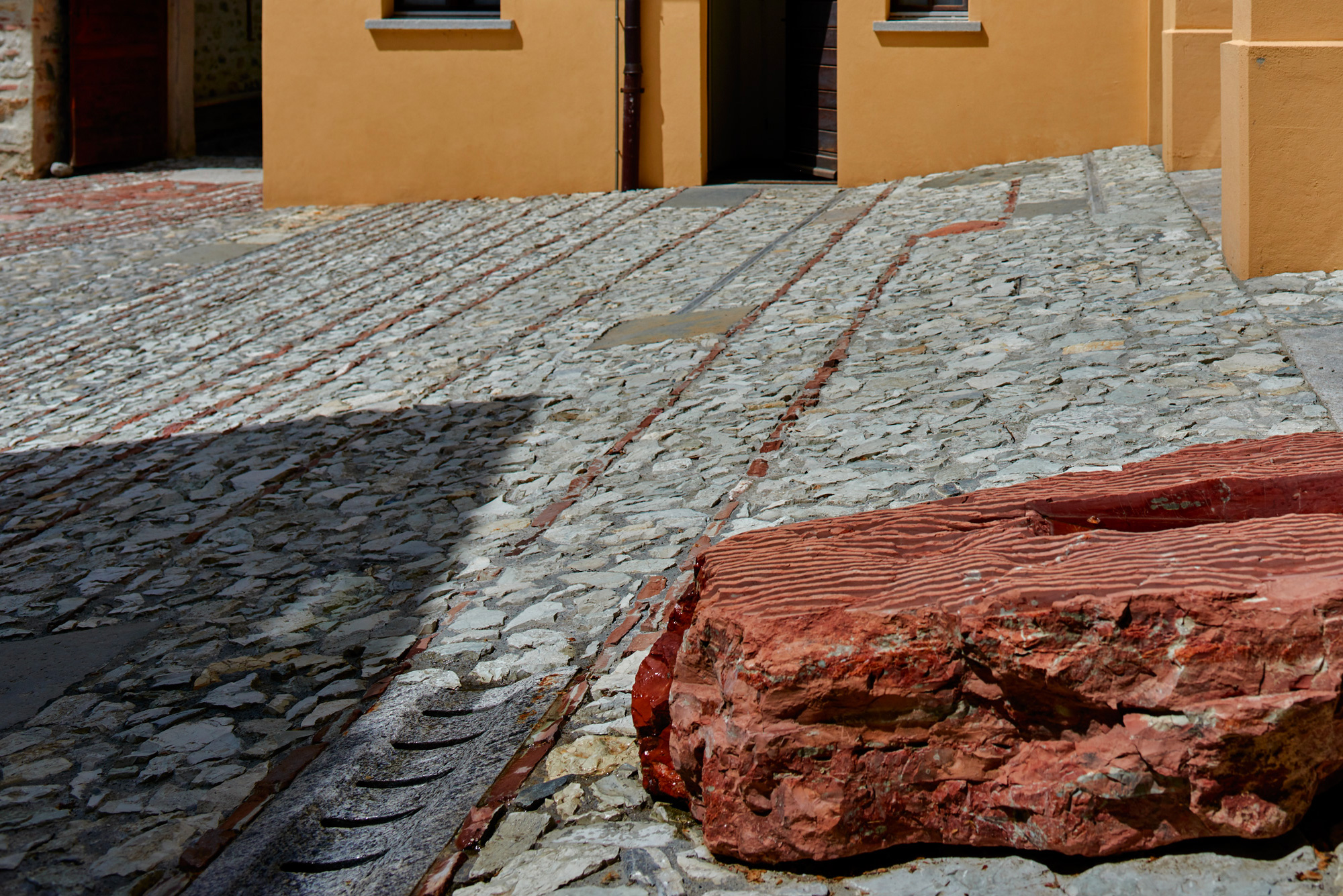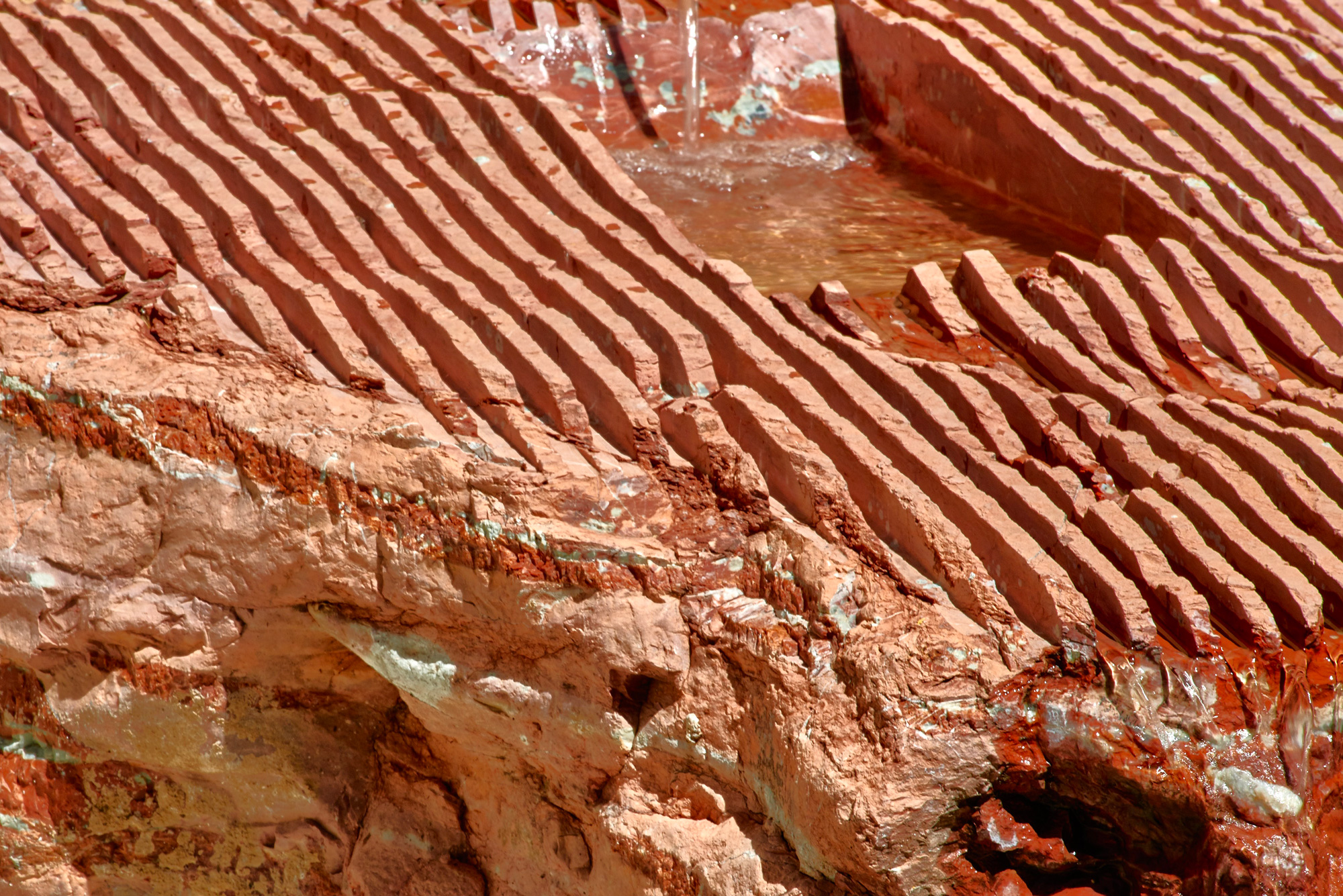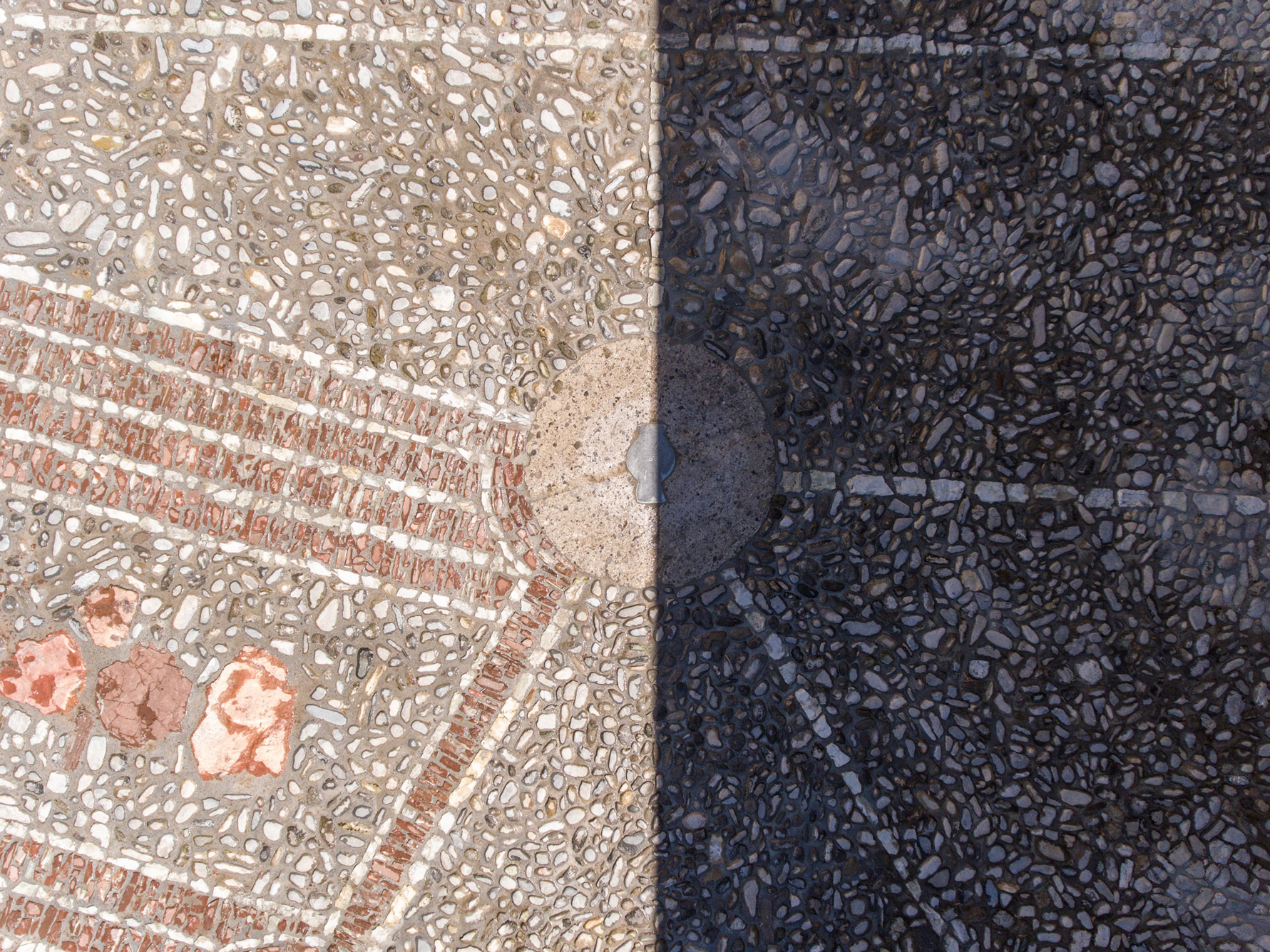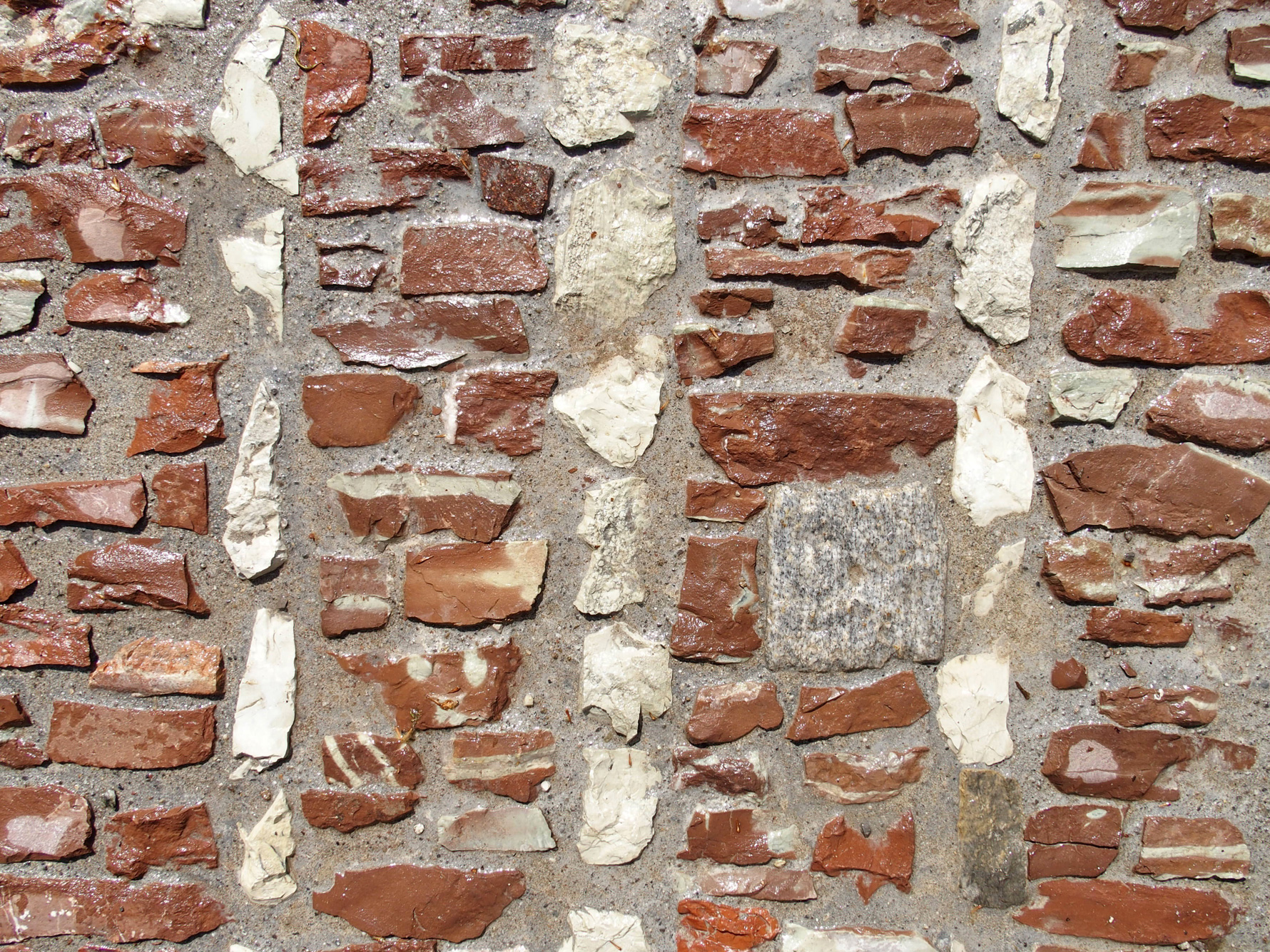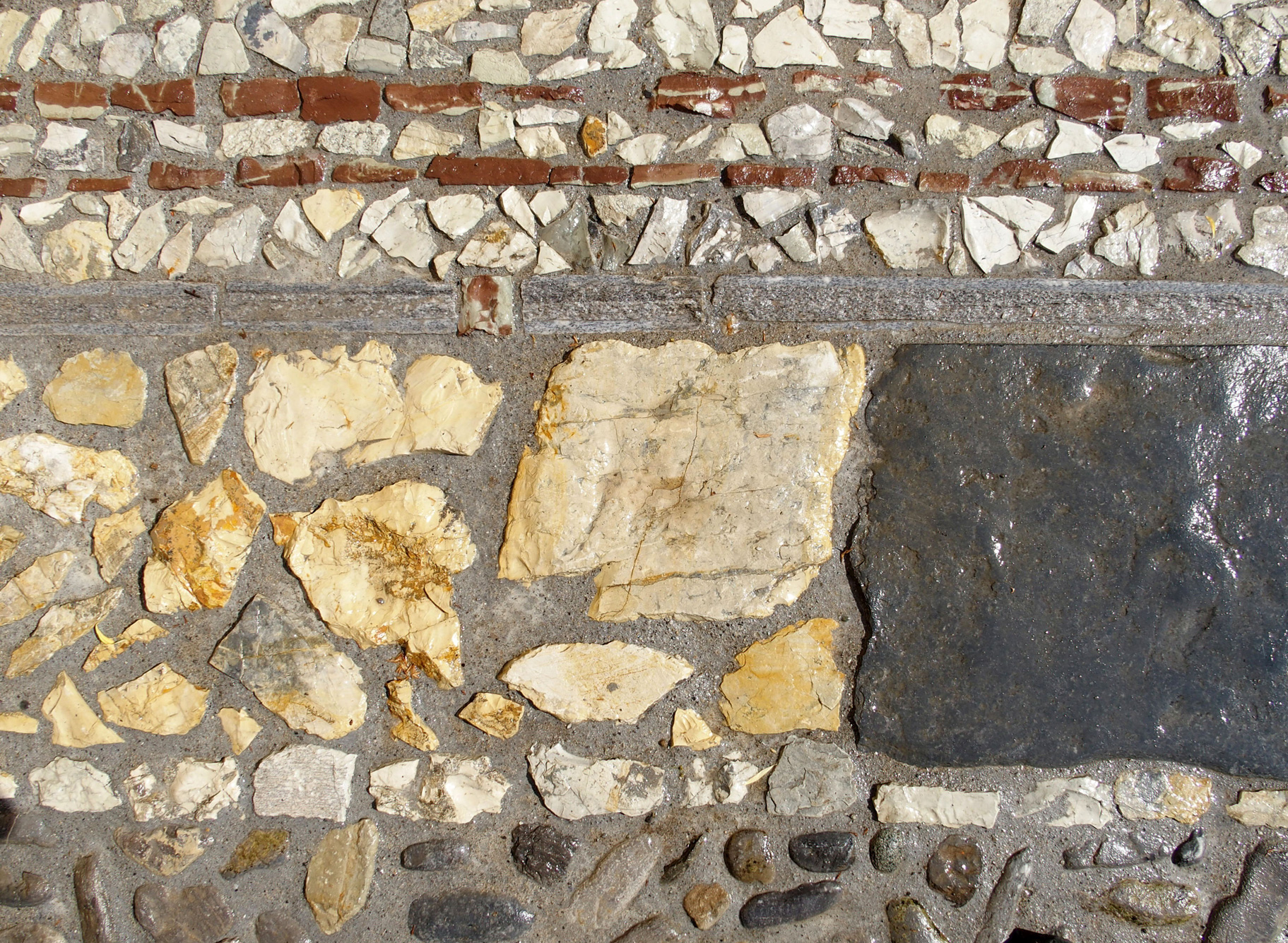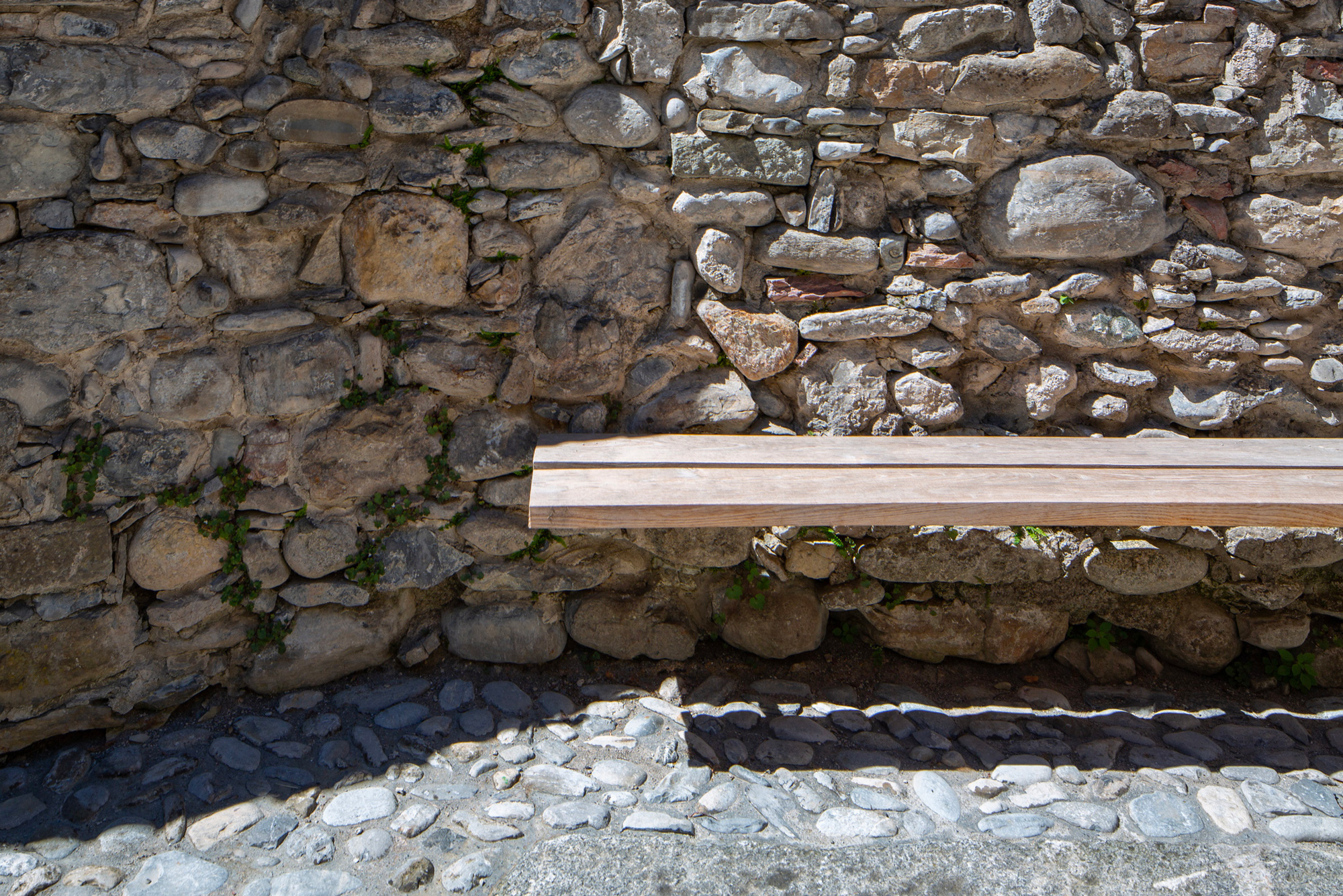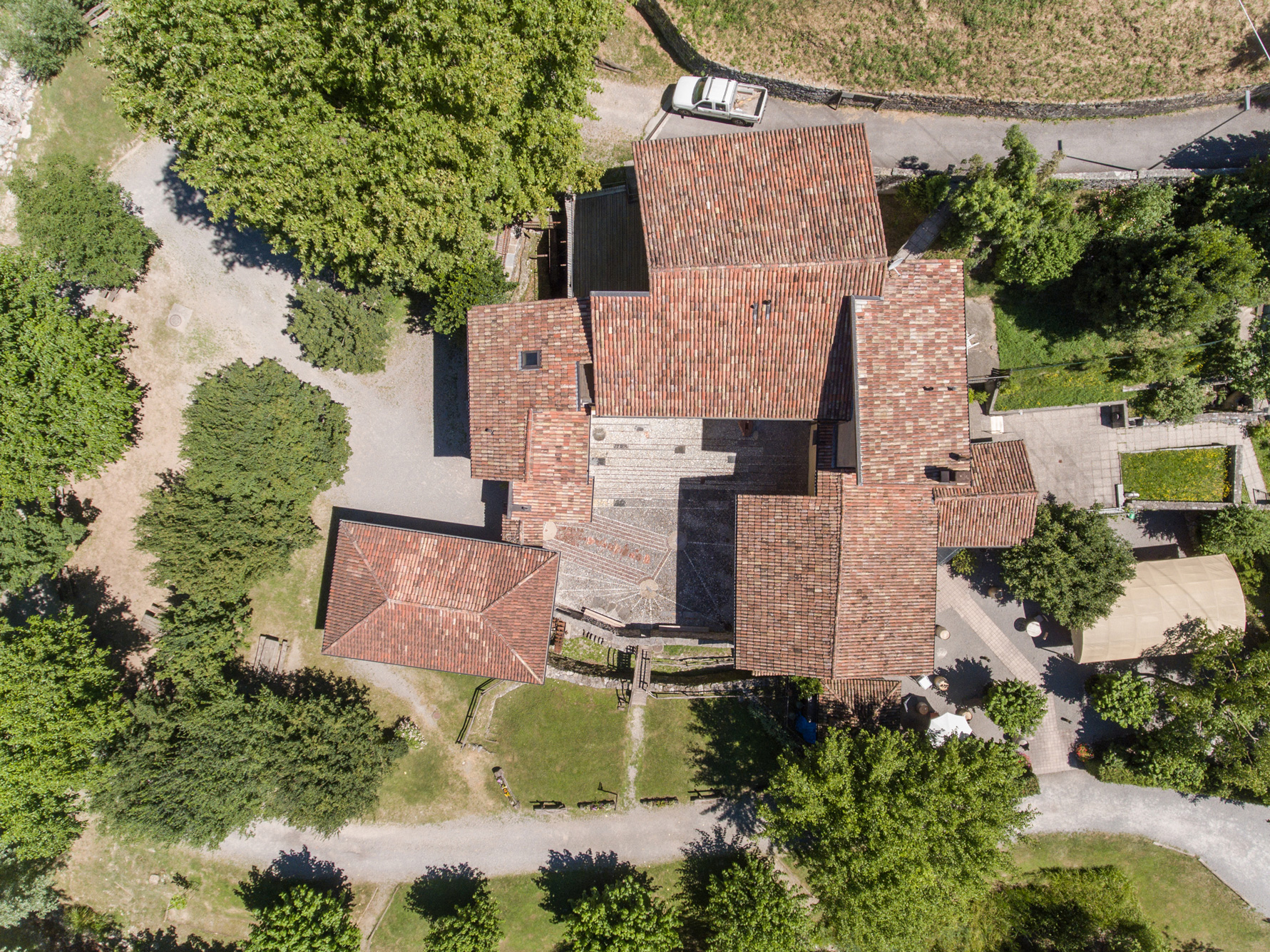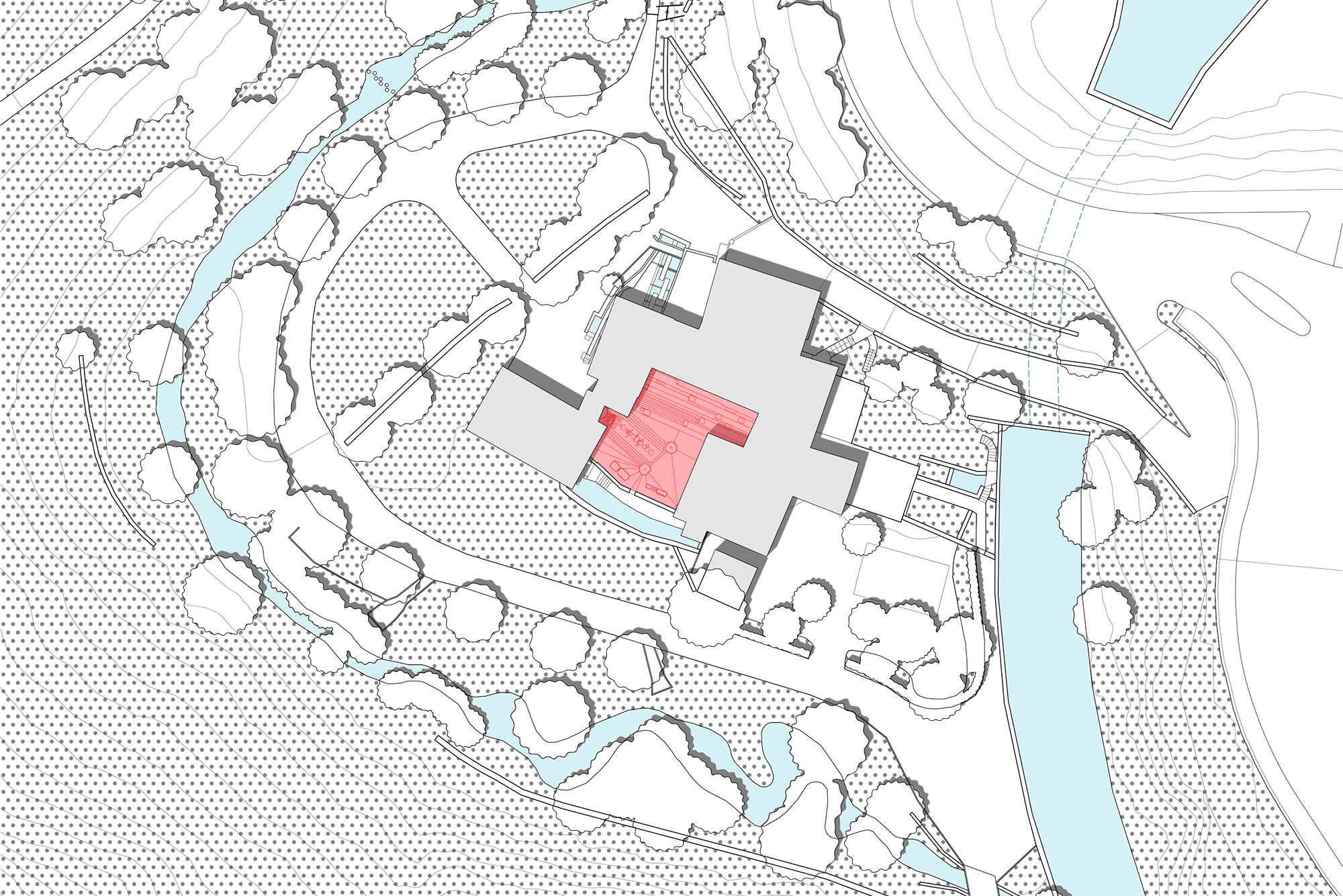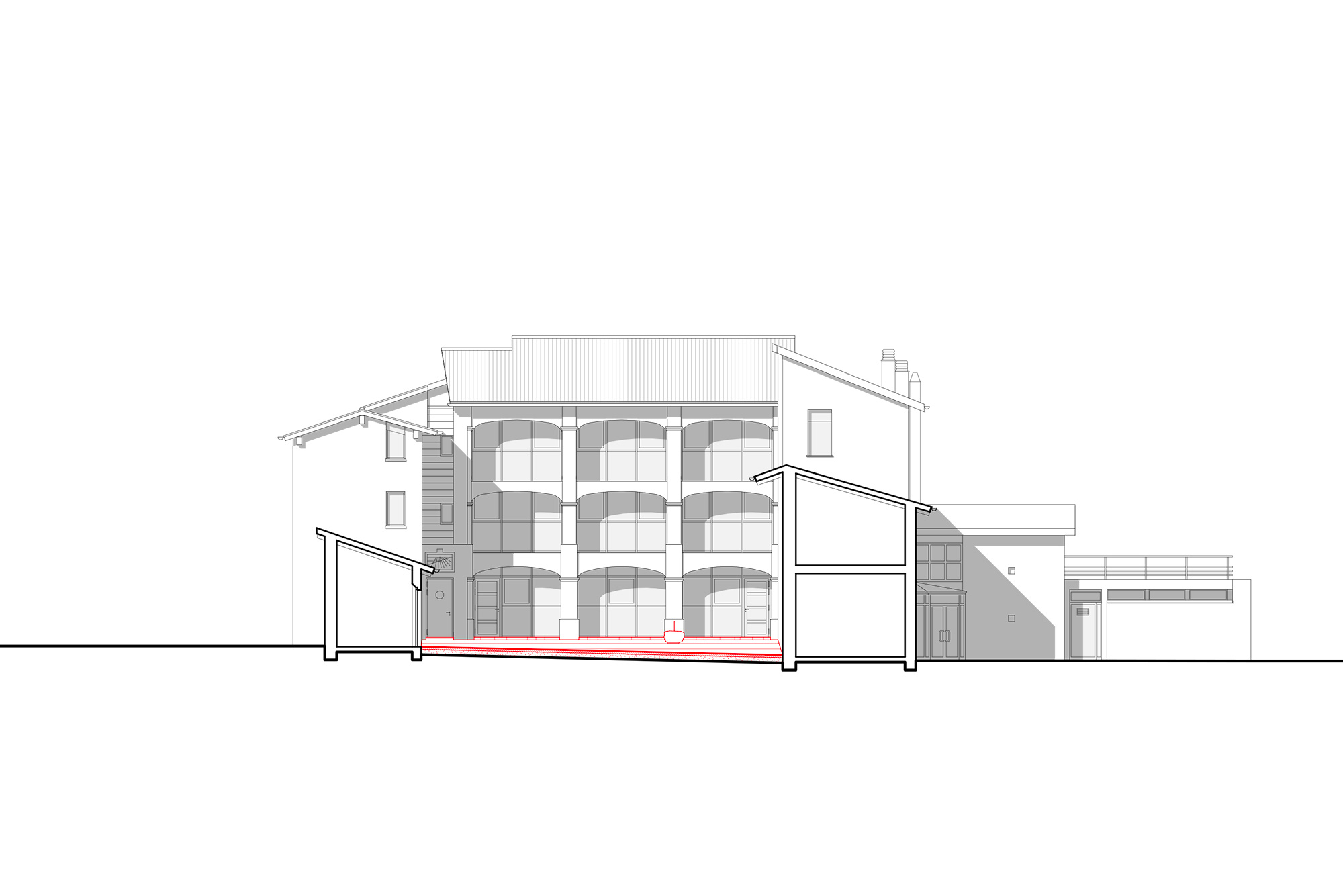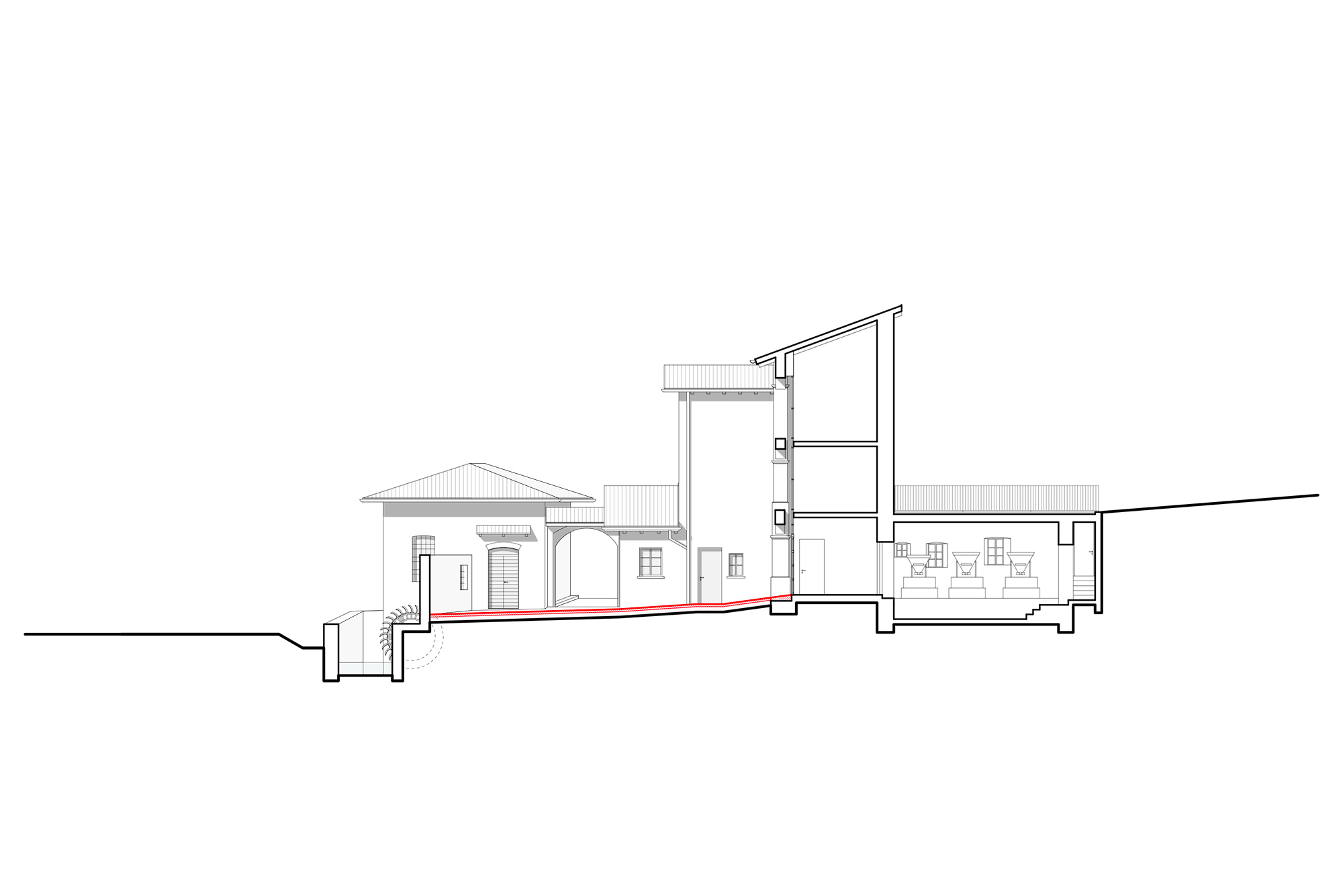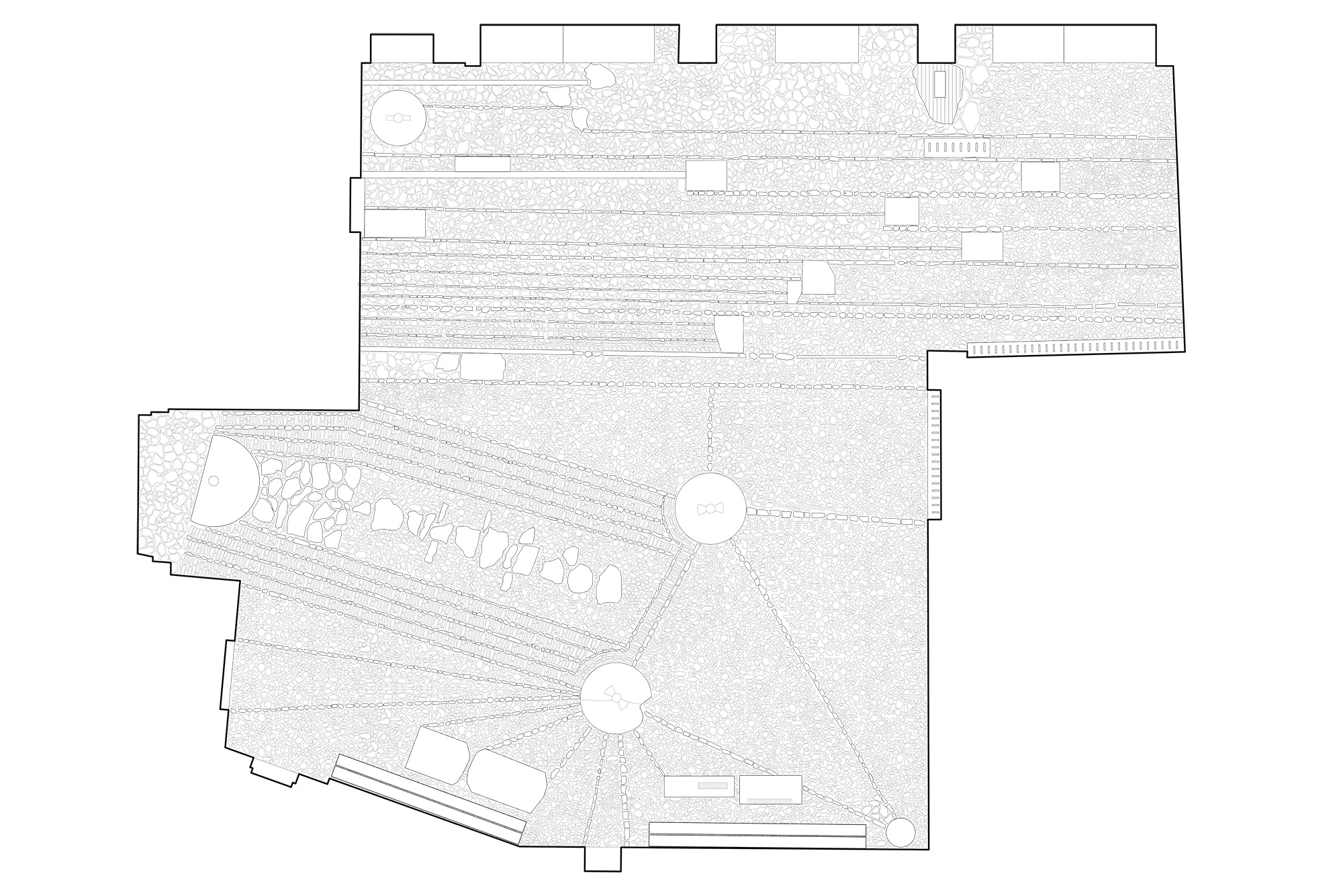The project for the reorganisation of the courtyard of the Ghitello watermill is part of a larger program to revitalise the Breggia Gorge park. Restoration work was already carried out to the supporting wall of the three waterwheels that operate the mill, the terrace above it was waterproofed and resurfaced with a new deck in black locust wood, and safety railings were added. The watermill courtyard was once used for loading and unloading cereals, which were then milled to produce flour; today it is the southern gateway to the park, one of the starting points for visits to the Breggia Gorge park. Prior to the restoration, the courtyard was in poor condition and the paving needed to be resurfaced.
The aim of the courtyard restoration project was to integrate a number of elements: the traces of various processes of agricultural production and vestiges of the cultural and natural heritage, together with historical elements and materials that are characteristic of the geology of the park. To give character to the paving design four ancient millstones from the Bernasconi mill that was demolished to build the former SACEBA cement works were incorporated. The larger of the two are made from a stone known as Molassa (a clastic sedimentary conglomerate).
The pair consists in a so-called “sleeping” millstone, which was laid under a “dancing” millstone rotating on
its own axis to grind cereal grains into flour. A smaller, dark, compact millstone, probably carved from a loose boulder is placed in front of the entrance door to the mill. The garnet gems that made it specially abrasive are visible on its surface.
The doors to the building are made from reclaimed granite blocks, which used to form the parapet of the ancient Ghitello bridge. The paired Molassa millstones (the “sleeping and the “dancing” stones) are sited at significant points within the courtyard: the “sleeping” stone in front of the narrow opening in the wall used by the miller to inspect the water-wheels that operated the crusher, the “dancing” stone at the centre of the courtyard. A fourth millstone, known as the “welcome” stone, is placed by the entrance to the courtyard, to welcome visitors. The paving layout of the courtyard is arranged around the three large millstones (the “welcome”, “sleeping” and “dancing” stones).
Sedimentary rocks that are typical of the geological landscape of the park (Maiolica Lombarda and Rosso ad Apticicollected in the process of clearing the public footpaths) were used together with the millstones and other stones that had already been laid in the courtyard (round river stones, known as boccette and quadrangular slabs of siliceous limestone, probably quarried in Salorino).
Maiolica Lombarda, also known as Bianconeis an extremely significant stone, as it provides the main component in the production of cement. Cement works were in fact established in the lower reaches of the park because of the presence of a large Bianconeoutcrop. This is a sedimentary rock that contains a high proportion of calcium carbonate originating from the remains of ancient mono-cellular marine organisms. A Maiolicastone with a visible fossil encased within a flint nodule is placed at the mill entrance.
The stones were laid in parallel white and red stripes. White rays radiate from the centre of the millstones, connecting the main points of the courtyard.
A fountain carved out of a red stone has also been erected, with parallel grooves cut into its surface. Water flows from the fountain into the grooves, evoking the sedimentation of rock layers eroded by the river.
The access route from the main gate is paved with red-coloured stones that form a “red carpet” around the three millstones. Within this area, large red stones are laid out so as to evoke a large, imaginary marine fossil.
In addition to the court, restoration work was carried out on the wall on which the three hydraulic wheels, that drive the millstones, are located, the arrangement of the overlying terrace (waterproofing and new robinia wood parapets for securing the Outer space.
